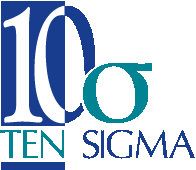
26 Apr 3 Keys to Writing Compliant IEP Goals
Important Aspects of Writing Compliant IEP Goals
IEP goals are the backbone of the Individualized Education Plan. In order to be compliant, IEP goals need to meet three important criteria including communicating what the student is working on that year, must be individualized based on student needs, and written in a way that explains how progress will be measured.
Communicate Clearly
Let's start with one of the most important aspects of IEP goals, which is to make sure they are written in a way that everyone on the IEP team understands what the student will be working to accomplish that year. This is important because the IEP is used to communicate with the student, parents, and key members of the IEP team. As most Special Educators have experienced, students sometimes move, switch schools during the year, or work with outside agencies for additional support. Because of circumstances like these, it is important to have clearly written goals so everyone is able to work together and make the transition process easier for the student.
Need to be Measurable
Another important part of writing effective IEP goals is to make sure they are measurable, which means the teacher needs to establish the student's present level and periodically monitor the student's progress. Generally speaking, most teachers find it easier to write academic goals compared to writing functional goals because academic goals are more concrete and there are many assessments that can be used to track progress. Functional goals (like behavioral or social-emotion goals) are sometimes considered more “abstract” and teachers often struggle with finding tools to help them gather reliable data. Because of that, Ten Sigma has created a series of Behavior Rubrics and Transition Rubrics, which can be used to write compliant annual goals and also provide reliable ways to measure present levels and monitor student progress.
Need to be Individualized
Because students have such a wide range of needs, the law is written to make sure that Special Educators are serving each student by writing individualized IEP goals. This aspect of writing compliant goals is important because it ensures that the IEP team is really serving the needs of each student. When writing annual goals, teachers need to include specific details such as criteria of the skill, methods, assistance, conditions, setting, measurement tools, responsibility, and timeline for completion. Some school districts require teachers to write annual goals and other districts require teachers to write annual goals with objectives/benchmarks. In either case, the goals need to be clearly written, so anyone involved in working with the student can easily understand them. We've created a simple PDF that provides examples of clear, individualized, and compliant goals including suggestions for the specific criteria listed above.
7 Questions to Consider when Writing IEP Goals
- What is the skill/behavior the student needs to improve?
- What direction does the skill/behavior need to move towards?
- What materials are needed to teach and document progress on the goal?
- What is the time frame, setting, assistance, and/or conditions for meeting the goal?
- What is the scale and/or criterion that will be used in the documentation process?
- What are the methods or measurement tools for measuring the goal?
- Who is responsible for measuring the goal?
Our goal as Special Educators is to help our students make progress on improving their skills and knowledge to succeed after school. In order to help our students, it is important for the goals to be clearly written, be measurable, and be individualized. We hope you found this information to be useful and that you'll use the FREE PDF to write more effective and compliant IEP goals.



